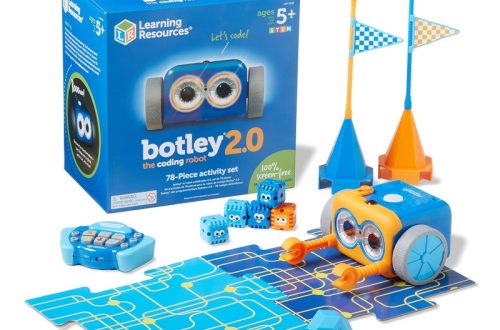The colorful jumble of the Rubik’s Cube has captivated minds for generations. What seems like an unsolvable mess is actually a logical puzzle with a clear path to victory. This guide will equip you with the knowledge to crack the code and solve the iconic cube with ease.
Part 1: Unveiling the Magic – Understanding the Cube

The Language of Turns:
Solving a Rubik’s Cube requires a specific vocabulary for its movements. A “turn” refers to rotating a single face of the cube either clockwise (CW) or counter-clockwise (CCW). There’s also the “slice” which involves turning the middle layer without affecting the top and bottom layers. Mastering these basic moves is the foundation for solving the cube.
Not All Twists Are Created Equal:
The Rubik’s Cube may appear to have identical faces, but there is a hidden truth beneath its surface. Each face actually contains a unique center piece that remains fixed in its position. Recognizing and keeping track of these centers during the solving process is crucial. These center pieces serve as fixed reference points, guiding your moves towards the ultimate solution. By understanding the role of these fixed center pieces, you can navigate the cube more effectively, aligning the surrounding pieces with the fixed centers to progress towards solving each face. This awareness not only aids in maintaining orientation throughout the solving process but also contributes to developing a deeper understanding of the cube’s mechanics. By acknowledging the significance of these fixed centers and their impact on the solving process, you can enhance your solving abilities and approach the Rubik’s Cube with a more strategic and informed mindset.

Part 2: A Step-by-Step Approach – Conquering the Cube
Building the Foundation – The White Cross:
The first step is creating a white cross on the bottom face. Locate the white edge pieces and position them so the white side forms a cross with the white center piece. There are various algorithms (a sequence of specific moves) for achieving this, but with practice, you’ll develop your own intuitive approach.
Conquering the Middle Layer – Perfecting the Stripes:
After completing the white cross, the next step is to focus on the middle layer. Your goal at this stage is to correctly position the edge pieces, ensuring that their colors align with the center pieces of the side faces. While specific algorithms are utilized during this step, the fundamental idea is to manipulate the edge pieces until their colored sides match the center pieces. By understanding the logic behind these algorithms, you will gain the ability to maneuver the edge pieces effectively, leading to their proper alignment with the center pieces. With practice and perseverance, you will develop the skills to recognize and execute the necessary movements to achieve this alignment intuitively.

Part 3: Climbing the Summit – Solving the Top Layers
Yellow Cross Formation – A Beacon of Progress:
Once the middle layer has been successfully conquered, the next stage involves tackling the top layer. Here, the objective is to create a yellow cross on the top face. This mirrors the white cross that was built earlier on the bottom face. Like the white cross, specific algorithms exist for this step. With practice, you will gradually develop the ability to intuitively recognize and position the yellow edge pieces. Through continuous practice and honing your skills, you will become adept in discerning the patterns and movements required to achieve the yellow cross on the top face. This intuitive understanding will enable you to progress beyond relying solely on algorithms. It will empower you to solve this stage more efficiently and with greater ease.
Orientation and Positioning – The Final Frontier:
The final stage of solving the Rubik’s Cube involves the completion of the last four corner and edge pieces of the top layer, which may initially seem daunting, but it’s a step-by-step process. Initially, focus on correctly orienting the corner pieces, ensuring their colored sides match the adjacent center pieces. Using specific algorithms and techniques, you will maneuver these corner pieces to their rightful positions, meeting the challenge of finally achieving a perfectly solved Rubik’s Cube. While this final stage may seem complex, it’s important to approach it methodically, breaking it down into manageable steps. By honing your skills and practicing these specific maneuvers, you will gradually gain confidence and proficiency in completing the Rubik’s Cube, further enhancing your problem-solving abilities and persistence.

Part 4: Beyond the Basics – Sharpening Your Skills
Practice Makes Perfect – Building Muscle Memory:
Solving the Rubik’s Cube is a skill that requires patience and consistent practice. It’s crucial to internalize the algorithms and focus on executing them smoothly. Through repetition, muscle memory is developed, enabling you to perform the moves instinctively. It’s important not to feel discouraged by initial stumbling blocks; with persistent practice, solving the cube will gradually become second nature. Embracing a positive and determined mindset as you navigate the learning curve is essential for continual improvement. Over time, as you dedicate yourself to mastering the algorithms and refining your technique, you will notice a significant enhancement in your solving abilities. Each solved cube will not only signify a successful outcome but also reflect the progress and determination invested in sharpening your skills. By embracing the process with dedication and perseverance, you will experience the rewarding journey of evolving from a novice to a proficient Rubik’s Cube solver.
Exploring the Labyrinth – Different Methods and Challenges:
The method presented here is just one approach to solving the Rubik’s Cube. There are several other methods available, each with its own strengths and complexities. As you gain experience, explore different methods to find one that suits your learning style and solving speed preferences. The world of cubing extends beyond solving a basic 3×3. There are competitions, variations with different sizes and shapes, and even blindfolded solving for the truly adventurous.

Congratulations! With dedication and this guide as your compass, you’re well on your way to cracking the code of the Rubik’s Cube. Remember, the journey itself is a rewarding experience that teaches problem-solving skills, patience, and the satisfaction of conquering a seemingly insurmountable challenge. So, grab your cube, twist and turn, and embark on your cubing adventure!


